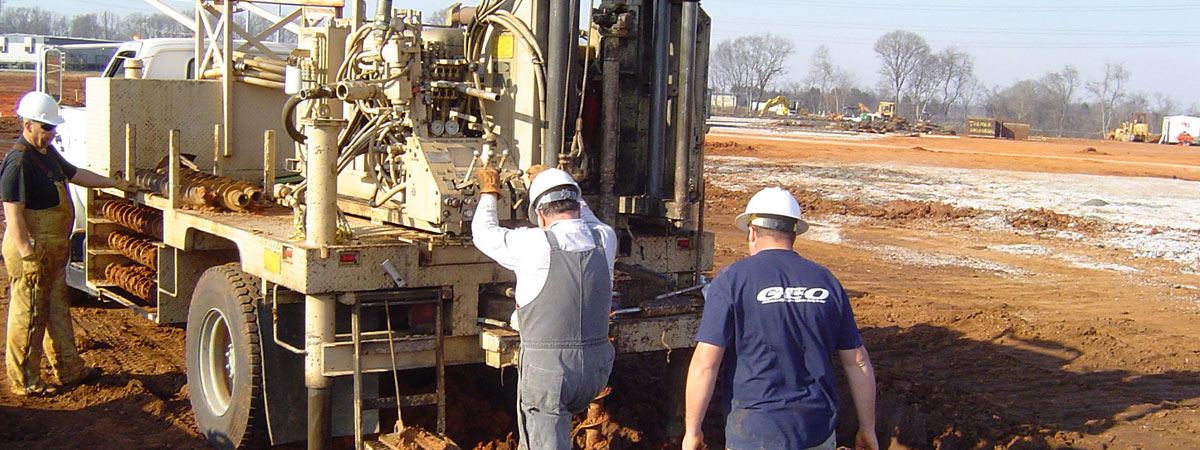How a Skilled Tailings Engineer Can Enhance Your Mining Procedures
Wiki Article
The Interdisciplinary Approaches in the Geotechnical Market: Bridging the Void In Between Design, Geology, and Environmental Scientific Research for Ideal Project Outcomes
The assimilation of engineering, geology, and environmental scientific research within the geotechnical sector is not simply helpful; it is essential for achieving optimal project end results. What approaches might arise to facilitate this crucial cooperation and enhance the effectiveness of geotechnical methods?Value of Interdisciplinary Partnership
The relevance of interdisciplinary partnership in the geotechnical industry can not be overemphasized. Reliable geotechnical tasks require the assimilation of diverse expertise from numerous fields, including design, geology, and environmental science. This cooperation makes certain that all elements of a job are taken into consideration, causing detailed services that address intricate challenges.When functioning in isolation,Interdisciplinary partnership cultivates technology by allowing professionals to share insights and approaches that might not be evident. By leveraging the strengths of multiple techniques, teams can identify prospective dangers, optimize layout processes, and improve the sustainability of geotechnical tasks. Such cooperation promotes an all natural understanding of site-specific conditions, which is important for accurate assessment and decision-making.
The complexity of geotechnical jobs necessitates a worked with strategy to problem-solving. When engineers, rock hounds, and ecological researchers work with each other, they can create a natural strategy that straightens technological needs with ecological factors to consider and regulative conformity. This harmony not only improves job results however additionally adds to the long-term resilience of infrastructure. Eventually, interdisciplinary cooperation is vital for advancing ideal practices and accomplishing quality in the geotechnical sector.
Secret Duties of Each Self-control
Partnership among different self-controls is not just advantageous; it is important for the successful execution of geotechnical projects. Each discipline-- design, geology, and environmental science-- plays a distinct yet interconnected role that adds to predict effectiveness and sustainability.Geotechnical designers are largely in charge of developing structures and ensuring structural integrity. They assess dirt and rock buildings to examine load-bearing abilities, offering important data for secure building techniques. Their competence allows the solution of cutting-edge solutions to complicated difficulties.
.webp)
Environmental researchers analyze the prospective impacts of construction on communities and water resources. They perform ecological analyses and establish mitigation techniques to reduce negative effects. By incorporating eco-friendly considerations, they make sure conformity with laws and advertise sustainability throughout the project lifecycle.
Study of Successful Assimilation
Successful combination of geotechnical techniques can be exemplified via different study that highlight the important link efficiency of teamwork in resolving complex engineering challenges. One significant example is the construction of the Hong Kong-- Zhuhai-- Macau Bridge, where a joint strategy including geotechnical engineering, geology, and ecological science was vital. Designers and geologists functioned in unison to analyze the seabed conditions and enhance the structure style, guaranteeing security and reducing ecological impact.One more impactful case is the improvement of slope security in the San Francisco Bay Location, where an interdisciplinary group combined geotechnical analysis with environmental evaluations. By incorporating hydrological researches and geological studies, the team successfully recognized potential landslide risks and carried out effective reduction procedures, improving security and sustainability.
Furthermore, the redevelopment of Brownfield sites frequently needs a multidisciplinary method. In one instance in Chicago, collaboration amongst geotechnical engineers, environmental researchers, and city planners led to the effective remediation of contaminated soil, permitting the safe change of the website into an area park. These situation studies highlight that interdisciplinary collaboration not only addresses technological challenges yet likewise fosters innovative options that profit both communities and jobs.
Obstacles in Multidisciplinary Projects

Furthermore, working with routines and process amongst numerous teams can be problematic, particularly when each self-control has one-of-a-kind task milestones and deliverables. This imbalance can cause delays and enhanced costs. The obstacle of resource allotment also impends big; ensuring that customized experience is offered at important times requires mindful preparation and insight.
Finally, governing conformity positions another substantial difficulty. Each self-control might deal with various regulatory frameworks, and straightening these requirements to meet task objectives can be intricate and taxing. Dealing with these difficulties demands strong leadership and reliable interaction techniques to foster partnership and make sure that multidisciplinary groups work cohesively towards shared objectives.
Future Trends in Geotechnical Practices
As the geotechnical websites sector progresses, emerging patterns are reshaping methods to deal with the challenges dealt with in multidisciplinary projects - geotechnical engineers. One navigate to these guys significant fad is the increased combination of advanced innovations, such as fabricated knowledge and artificial intelligence, into geotechnical analysis and design. These modern technologies boost predictive modeling and threat assessment, allowing designers to make even more educated choices throughout the project lifecycle
In addition, the adoption of digital twins and real-time monitoring systems is becoming much more widespread. These devices help with ongoing evaluation of soil conditions and structural efficiency, enabling for timely treatments when issues occur.
Final Thought
In verdict, the assimilation of design, geology, and ecological science is crucial for achieving optimal outcomes in the geotechnical industry. Successful case research studies illustrate the benefits of this approach, while acknowledging the difficulties faced in multidisciplinary tasks.The integration of design, geology, and ecological scientific research within the geotechnical industry is not merely advantageous; it is crucial for attaining optimum job outcomes. Efficient geotechnical tasks need the combination of varied know-how from different areas, consisting of design, geology, and ecological science.Navigating the complexities of multidisciplinary jobs in the geotechnical industry provides a number of substantial difficulties.As the geotechnical industry progresses, arising trends are improving methods to address the obstacles encountered in multidisciplinary projects. Geotechnical designers are increasingly working together with ecological scientists to guarantee that jobs straighten with sustainability objectives and conform with regulative demands.
Report this wiki page